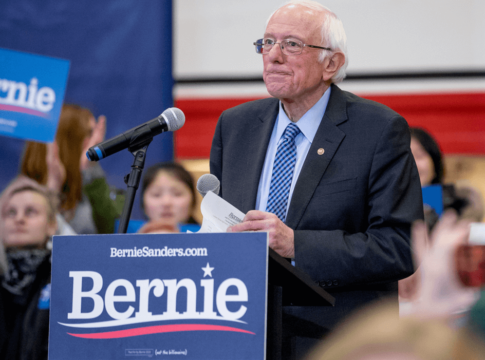
The 2020 Democratic primary has changed the debate on higher education in the United States. When Senator Bernie Sanders first proposed making public college free during his 2016 campaign, most commentators, myself included, dismissed the idea as radical and unrealistic, along with his candidacy.
Just four years later, Sanders is a serious contender for the nomination and many of the other Democrats also propose some form of “free college.” The idea has taken hold more quickly than many expected—but will it work? My answer: yes. But not well. In fact, free college could be the fastest way to destroy precisely what makes higher education in this country exceptional. And there are better ways to achieve its goal of removing the economic barriers to college.
The appeal of free college is clear. Americans have long embraced the college degree as an important mechanism for social mobility, but the price tag has increasingly put higher education out of reach for many. Making public college free would ensure that everyone could afford this ticket to prosperity, and in that sense, would deliver a piece of the American dream. Frankly, it’s hard to argue that this would be a bad thing.
But college is already free to the lowest-income students, who benefit from generous state and federal grants, as well as private scholarships from their college or university. According to a recent Urban Institute report, around 27% of students who are currently enrolled in college do not face any cost for tuition or fees. Additional spending to make college universally free will necessarily flow to more well-off students who weren’t already benefiting from the existing means-tested programs.
Despite the drawbacks of this seemingly unprogressive approach, “universality” does also offer some distinct advantages relative to means-tested aid. First, the administration of a means-tested financial aid program is expensive, both for individual students proving their eligibility and for the government offices that exist solely to review reams of paperwork and disburse aid. Doing away with means testing could generate savings in administrative costs, which would offset at least some of the revenue lost from eliminating tuition.
Another, and less obvious, benefit of free college is that it could potentially eliminate the information barrier that currently keeps many disadvantaged students from even applying to college. Despite the fact that nearly one-third of students already attend college for “free,” many assume that higher education is out of reach. These potential college students are victims of the opaque structure of our college application and pricing system. Students considering college generally need to apply, then wait months before learning how much they’ll receive in aid. The message that “college is free” would encourage more people to apply than would have otherwise, bringing down the economic barrier to education—and that’s a good thing.
But do these benefits outweigh the tremendous cost? Many on the right worry about the economic weight of a free-college regime. It’s difficult to estimate how much it would cost, but according to Sanders, even just to replace the current revenue collected from public college tuition, we’d need to come up with $70 billion per year. The real cost would undoubtedly be higher due to increased enrollment. To put that in perspective, the same $70 billion would allow the U.S. to double our current spending on SNAP (Supplemental Nutrition Assistance Program) and related programs aimed at eliminating hunger.
While the financial burden should be taken seriously, we stand to lose far more than money in implementing free college. In fact, the fiscal cost pales in comparison to the threats to quality and innovation.
In the current system, colleges operate in a market of sorts, albeit a highly regulated and subsidized one. Colleges are competing for students and the tuition dollars that come with them. As a result, we’ve seen the introduction of services like online coursework, competency-based education, which appeals to working adults, and even dramatic alternatives like coding bootcamps. The result of these changes is that higher education is more diverse than ever before. These innovations have expanded access to college to populations that weren’t served, or weren’t served well, by the traditional college model.
Some innovations, like the rise of for-profit colleges, haven’t served all students well. But we shouldn’t write off all innovation to protect against potential abuses. Better to embrace smart oversight while maintaining the incentives for colleges to innovate.
A free college regime would dampen the market forces that encouraged these innovations. The pull of “free” would divert students away from private colleges and training programs and into the public options.
Institutions in the public sector generally have less incentive to innovate because they have less to gain by improvements in quality and less to lose from falling short. For example, private colleges that don’t deliver for their students will have to close their doors. That’s a risk that public colleges just don’t face. The public colleges thus don’t have the same need to think of new ways to deliver education more effectively or efficiently. Sure, some public colleges consolidate campuses, and others innovate (think of Arizona State University), but those are exceptions.
Even the most generous free college regime couldn’t avoid these problems, because they are not a question of funding. The shift in incentives inherent in a public takeover would necessarily threaten innovation and quality.
Just because free college would cause more harm than good, though, doesn’t mean the status quo is the best way forward. The status quo was designed to deliver the most aid to the neediest students. That’s hard to beat—but there is room for improvement.
Tuition isn’t the only, or even the most important, barrier to enrollment for low-income students. The rest of life’s expenses—food, clothing, housing, transportation—for oneself, and often a family, are what stand in the way between many young people and a degree. For them, free college isn’t enough. Rather than make college free for all, those funds should be spent to offset these non-tuition costs for the poorest students through expanded Pell Grants, the federal need-based grant program.
For those worried about the growing burden of student debt, a subtle change in that same program could be a game-changer. By moving grant eligibility up earlier in the course of college enrollment, we could substantially reduce the risk of attending college. Those who struggle most with unaffordable student loans are those who take on debt but don’t achieve a degree. By moving grant-based support into the early years of college, we would allow students at all income levels to try college with less financial risk.
Simply adding more money won’t eliminate the information barrier that stands between many low-income students and college enrollment. A better idea would be to automate the process of federal financial aid so that grant awards and loan eligibility can be retrieved from a website, perhaps hosted by the IRS, at any time. This might require some tweaks in how eligibility is determined, but would be worth the cost to ensure that every potential college student understands exactly what they can expect to spend on a degree. Some students would be surprised to find that “free college” has been true for them all along.
Yes, free college would work, insofar as it would make college free. While this has its merits, its laudable goals are ultimately outweighed by the harm it would do to higher education in the U.S. We should aim to reduce the economic barriers to college while maintaining the market structure that drives the quality and innovation that make our system exceptional.
Beth Akers is a senior fellow at the Manhattan Institute and co-author of Game of Loans: The Rhetoric and Reality of Student Debt.





